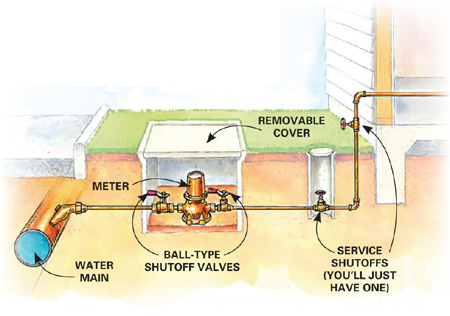
In warm climates…
The main shutoff is typically outside, attached to a wall or underground.
Your home’s water supply system is dangerous. In just minutes, a cracked pipe, burst hose or leaking icemaker line can do thousands of dollars in damage. But if you know the basics about shutoff valves, you can stop the flow instantly and limit the harm.
Shutoff valves are located near any device that uses water. Most of them are easy to find; they’re typically under sinks and toilets, behind the washing machine and above the water heater. Shutoffs for tubs or showers are often hidden behind a wood or plastic “access panel,” though some tubs and showers don’t have shutoffs. Your main valve—which shuts off water to your entire house—may be indoors or out. Usually, there are actually two valves flanking the water meter and you can turn off either one.
Shutoff valves go unused for years, and mineral deposits can make them impossible to close. So it’s a good idea to make sure yours work. If you have standard valves, just turn the handle clockwise. If you have ball-type valves, crank the lever one-quarter turn. Ball valves rarely fail, but it’s good to check them anyway.

In warm climates…
The main shutoff is typically outside, attached to a wall or underground.
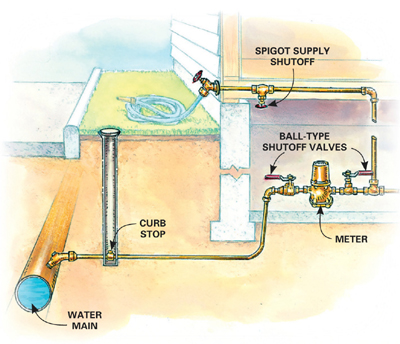
In colder climates…
The main shutoff is typically in the basement. There is also a “curb stop” shutoff that requires a special tool to operate.
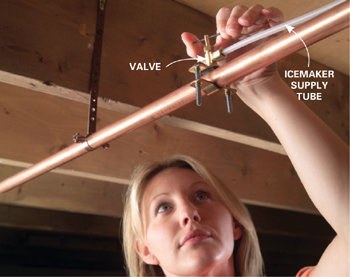
Valves for icemakers may be under the kitchen sink, in a utility closet or in a basement or crawl space.
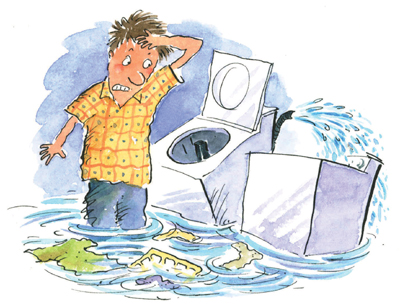
Voice of experience
A few weeks after moving into my first home, a washing machine hose burst, releasing a geyser in my laundry room. I knew enough to try the valve behind the washer, but it was ancient. And stuck. What I didn’t know about was the main valve, which could have shut off the water to the whole house. So I just stood there like a dummy, waiting for a plumber to show up while water flowed from the laundry room into adjoining rooms. Insurance covered most of the damage, but I paid the deductible, plus higher insurance premiums for years afterward.
Andy Carson, The Family Handyman Field Editor
When a valve won’t budge, sometimes it helps to loosen the packing nut just a little. Turn it counter-clockwise while holding the handle steady with your hand or pliers. If you ever notice a leak around a valve stem, tighten the packing nut.
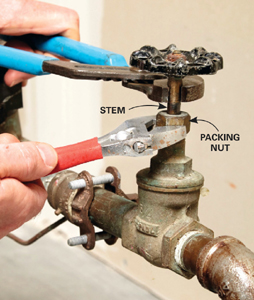
Every insurance adjuster has a hundred stories like this one: The homeowners left town Friday and returned Sunday evening to find thousands of dollars in water damage. The moral of these stories is simple: Before going on vacation, turn off the main valve. In less than a minute, you can eliminate the most common cause of home damage.
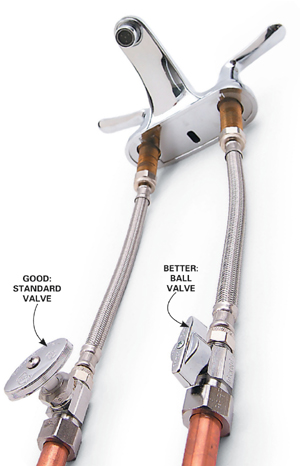
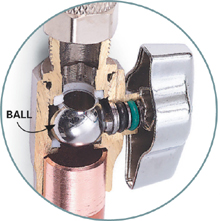
If you have any plumbing work done that requires replacing valves, ask for ball valves. That may add ten bucks to the cost of the project, but it’s a bargain. Unlike other valves, which rely on screw mechanisms and rubber seals, ball valves have a simple ball inside, which rotates to open or close. That simplicity means reliability; ball valves almost always work when you need them.